Composite Agents
Abstract
We introduce the concept of composite agents to effectively model complex agent interactions for agent-based crowd simulation. Each composite agent consists of a basic agent that is associated with one or more proxy agents. This formulation allows an agent to exercise influence over other agents greater than that implied by its physical properties. Composite agents can be added to most agent-based simulation systems and used to model emergent behaviors among individuals. In practice, there is negligible overhead of introducing composite agents in the simulation. We highlight their application to modeling aggression, social priority, authority, protection and guidance in complex scenes.
Paper (SCA 2008) (PDF, 4.4 MB)
Videos
Full video (DIVX, 56.7 MB)
Introduction (DIVX, 5.3 MB)
Proxy agents (DIVX, 2.1 MB)
Aggression (DIVX, 22.1 MB)
Prioritization (DIVX, 15.2 MB)
Trailblazing (DIVX, 25.9 MB)
Scenarios with modeled behaviors.
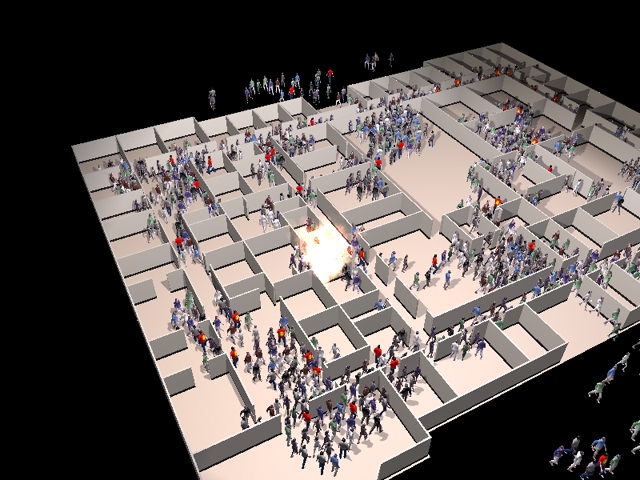 |
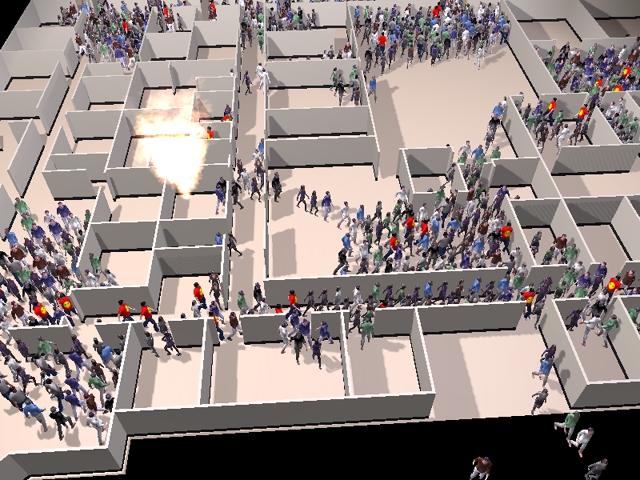 |
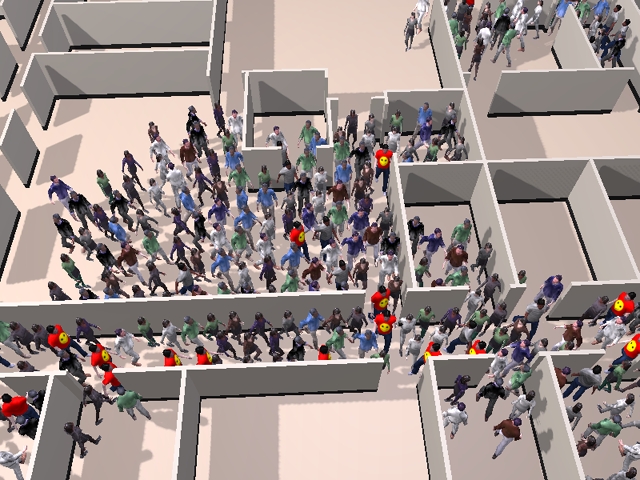 |
Emergency evacuation in an office building: The agents in red are aggressive agents. They are able to carve their own way through the crowd and exit more quickly than the others.
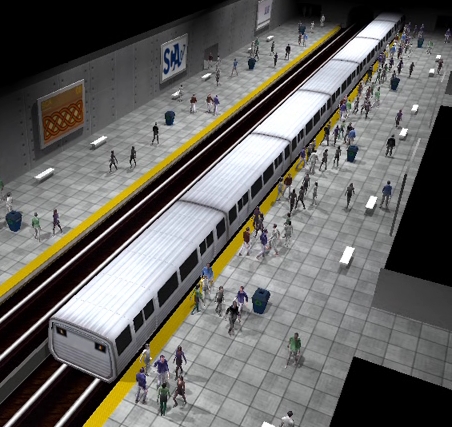 |
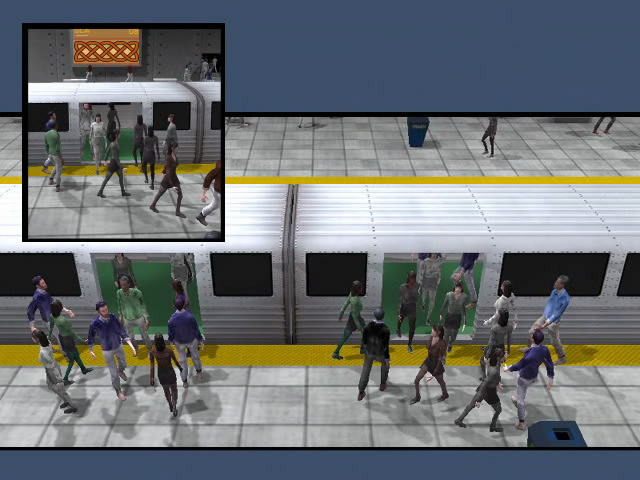 |
 |
A crowded subway station: The exiting agents have a higher priority allowing them to exit in an orderly manner before everyone else starts boarding. The priority proxy formulation eliminates the need for any kind of explicit coordination between the exiting and boarding agents. Notice that counter flow happens if space permits.
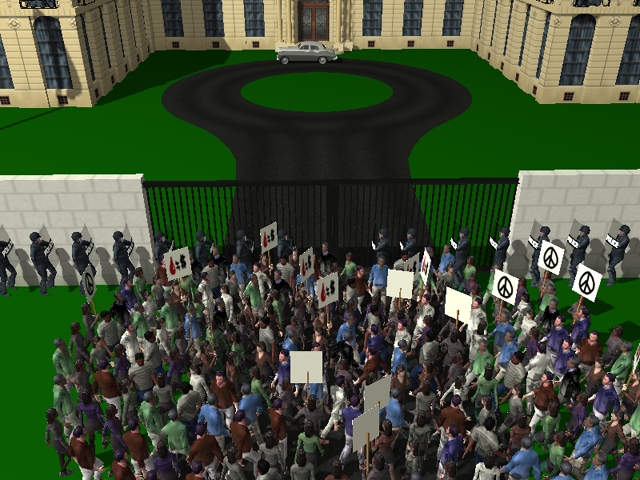 |
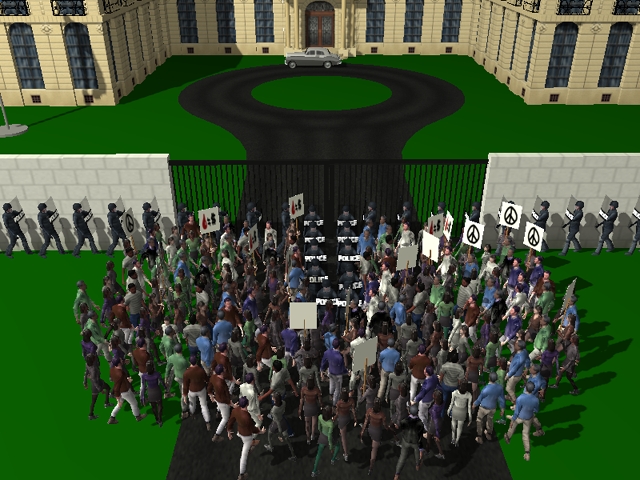 |
 |
A crowd of protesters outside an embassy: Two ranks of policemen clear the protesters off the road. Notice that when forcing their way into the crowd, even if the actual gap between the individual policemen is enough for a protest or to pass through, the perceived continuity of authority prevents the protesters from breaking the police line.
Acknowledgment
This research was supported in part by ARO Contracts DAAD19-02-1-0390 and W911NF-04-1-0088, NSF awards 0400134, 0429583, and 0404088, DARPA/RDECOM contract N61339-04-C-0043, Intel, Carolina Development, and Disney.